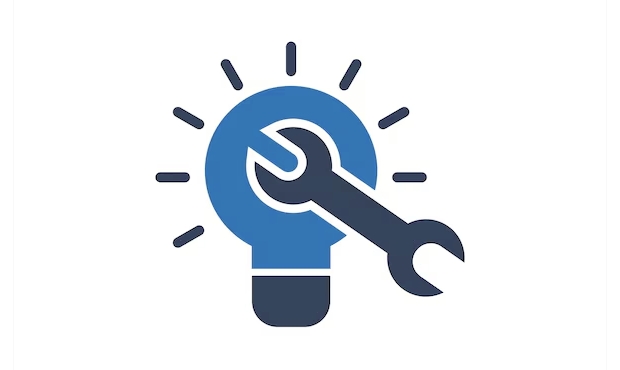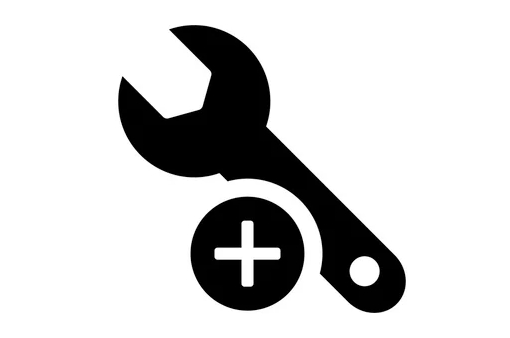 Computer Tutorials
Computer Tutorials
 Troubleshooting
Troubleshooting
 How to Troubleshoot Google Chrome Remote Desktop Not Working
How to Troubleshoot Google Chrome Remote Desktop Not Working
How to Troubleshoot Google Chrome Remote Desktop Not Working
If Chrome Remote Desktop isn't working, try these steps: 1. Check internet on both devices. 2. Ensure the extension is enabled and updated. 3. Confirm the host is powered on and unlocked. 4. Adjust firewall/antivirus settings. 5. Restart the Remote Desktop service. 6. Remove and reconfigure the host with a new PIN.

If you're experiencing issues with Google Chrome Remote Desktop not working, several factors could be causing the problem. Here are the steps to troubleshoot and resolve the issue:
The operating environment of this tutorial: Dell XPS 13, Windows 11
1. Check Internet Connectivity on Both Devices
Stable internet connections are essential for Chrome Remote Desktop to function properly. A weak or unstable connection on either the host or client device can prevent remote access.
- Open a web browser on both the local and remote computers and navigate to a website to confirm internet access.
- Run a speed test using a service like speedtest.net to ensure sufficient upload and download speeds on the host device.
- Restart your router or modem if connectivity appears inconsistent.
Ensure both devices are connected to the internet and have minimal latency for optimal performance.

2. Verify Chrome Remote Desktop Extension and Service Status
The Chrome Remote Desktop extension must be properly installed and running on both ends. If the service is disabled or corrupted, remote sessions will fail.
- Open Google Chrome and go to chrome://extensions.
- Ensure "Chrome Remote Desktop" is enabled and up to date.
- If missing, reinstall it from the Chrome Web Store.
- On the host machine, go to Chrome Remote Desktop app settings and confirm the remote access service is running.
Reinstalling the extension can resolve issues caused by corrupted files or failed updates.

3. Confirm Host Device Is Powered On and Unlocked
The host computer must be powered on and logged into a user session. Chrome Remote Desktop cannot wake a sleeping or shut-down machine.
- Physically check the host device to ensure it is not in sleep or hibernation mode.
- Adjust power settings to prevent the device from sleeping automatically.
- On Windows, go to Control Panel > Power Options and select "High performance" or customize the plan to keep the device awake.
- Ensure the user account on the host is signed in, as remote access may be blocked at the login screen depending on OS settings.

4. Adjust Firewall and Antivirus Settings
Firewalls or security software may block the ports or processes used by Chrome Remote Desktop, preventing connection establishment.
- Temporarily disable third-party antivirus or firewall software to test if it is interfering.
- Add Chrome Remote Desktop as an allowed application in your firewall settings.
- Ensure outbound traffic on ports used by Chrome (typically HTTPS/443) is permitted.
Do not permanently disable security software; instead, configure exceptions for Chrome Remote Desktop.
5. Restart Chrome Remote Desktop Service
The background service responsible for remote access may become unresponsive. Restarting it can restore functionality without requiring a full system reboot.
- Open the Chrome Remote Desktop app on the host machine.
- Stop the remote access service for the current host.
- Wait 10 seconds, then restart the service and re-enable remote connections.
- Attempt to reconnect from the client device.
6. Clear Host Access and Reconfigure Sharing Settings
Corrupted access permissions or outdated configurations can prevent new connections from being established.
- In the Chrome Remote Desktop app, go to "My Computers" and remove the affected host.
- Re-enable remote access by setting up the host again, including renaming the device and assigning a new PIN.
- Ensure two-factor authentication is enabled on the associated Google account for security.
Generating a new PIN ensures outdated credentials are not causing authentication failures.
The above is the detailed content of How to Troubleshoot Google Chrome Remote Desktop Not Working. For more information, please follow other related articles on the PHP Chinese website!

Hot AI Tools

Undress AI Tool
Undress images for free

Undresser.AI Undress
AI-powered app for creating realistic nude photos

AI Clothes Remover
Online AI tool for removing clothes from photos.

ArtGPT
AI image generator for creative art from text prompts.

Stock Market GPT
AI powered investment research for smarter decisions

Hot Article

Hot Tools

Notepad++7.3.1
Easy-to-use and free code editor

SublimeText3 Chinese version
Chinese version, very easy to use

Zend Studio 13.0.1
Powerful PHP integrated development environment

Dreamweaver CS6
Visual web development tools

SublimeText3 Mac version
God-level code editing software (SublimeText3)
![How to Open HEIC/HEIF Files on Windows [4 Easy Ways]](https://img.php.cn/upload/article/001/431/639/175806882174072.jpg?x-oss-process=image/resize,m_fill,h_207,w_330) How to Open HEIC/HEIF Files on Windows [4 Easy Ways]
Sep 17, 2025 am 08:27 AM
How to Open HEIC/HEIF Files on Windows [4 Easy Ways]
Sep 17, 2025 am 08:27 AM
IfHEICphotosfromaniPhonewon’topenonWindows,trythesesolutions:1.InstallHEIFImageExtensionsfromMicrosoft.2.Useathird-partyviewerlikeXnViewMP.3.ConvertHEICtoJPEGusingonlineordesktoptools.4.EnableHEIFsupportviaWindowsOptionalFeatures.
![Face ID Not Working on iPhone [7 Troubleshooting Steps]](https://img.php.cn/upload/article/001/431/639/175815048169066.jpg?x-oss-process=image/resize,m_fill,h_207,w_330) Face ID Not Working on iPhone [7 Troubleshooting Steps]
Sep 18, 2025 am 07:08 AM
Face ID Not Working on iPhone [7 Troubleshooting Steps]
Sep 18, 2025 am 07:08 AM
IfFaceIDisn'tworking,trythesesteps:1.CleantheTrueDepthcamera.2.RestartyouriPhone.3.Ensureproperfacepositioningandlighting.4.Re-enrollyourface.5.UpdateiOS.6.Resetallsettings.7.ContactAppleSupportifissuespersist.
 How to solve 'We can't sign into your account' on Windows?
Sep 20, 2025 am 06:23 AM
How to solve 'We can't sign into your account' on Windows?
Sep 20, 2025 am 06:23 AM
Ifyoucan'tsignintoyourMicrosoftaccountonWindows,trythesesteps:1.Checkinternetconnectionandnetworksettings.2.Verifycorrectlogincredentials.3.Restartyourdevice.4.Signinwithalocalaccounttemporarily.5.ClearCredentialManagercache.6.Runthebuilt-introublesh
 Windows 11 upgrade is stuck at 99%, what should I do?
Sep 21, 2025 am 05:02 AM
Windows 11 upgrade is stuck at 99%, what should I do?
Sep 21, 2025 am 05:02 AM
IfyourWindows11upgradeisstuckat99%,wait2hoursifdiskactivitycontinues.Iffrozen,forcerestart,runWindowsUpdateTroubleshooter,cleartheSoftwareDistributionfolder,orusetheMediaCreationToolforanin-placeupgrade.
 What to do when Windows is stuck on the 'Welcome' screen?
Sep 19, 2025 am 06:55 AM
What to do when Windows is stuck on the 'Welcome' screen?
Sep 19, 2025 am 06:55 AM
IfWindowsisstuckonthe"Welcome"screen,trythesesteps:1.ForcerestartandbootintoSafeMode.2.UseTaskManagertorestartExplorer.3.CleartempfilesviaCommandPrompt.4.Disablestartupservicesusingmsconfig.5.RunSFCtorepairsystemfiles.
 What to do when a Windows update fails to install?
Sep 22, 2025 am 07:04 AM
What to do when a Windows update fails to install?
Sep 22, 2025 am 07:04 AM
IfaWindowsupdatefails,trythesesteps:1.RuntheWindowsUpdateTroubleshooter.2.RestartWindowsUpdateandBITSservices.3.CleartheSoftwareDistributionfolder.4.RunDISMandSFCscanstofixsystemcorruption.5.Temporarilydisablethird-partyantivirussoftware.
![External Monitor Not Detected on Mac [9 Solutions]](https://img.php.cn/upload/article/001/431/639/175797384132459.jpg?x-oss-process=image/resize,m_fill,h_207,w_330) External Monitor Not Detected on Mac [9 Solutions]
Sep 16, 2025 am 06:04 AM
External Monitor Not Detected on Mac [9 Solutions]
Sep 16, 2025 am 06:04 AM
IfyourMacdoesn'tdetectanexternalmonitor,trythesesteps:1.Checkcablesandconnections.2.RestartMacandmonitor.3.UseDetectDisplaysinSystemSettings.4.ResetNVRAM/PRAM.5.Tryadifferentportoradapter.6.UpdatemacOSandfirmware.7.BootinSafeMode.8.Verifydisplaysetti
 How to Fix 'This Program is Blocked by Group Policy'
Sep 20, 2025 am 02:14 AM
How to Fix 'This Program is Blocked by Group Policy'
Sep 20, 2025 am 02:14 AM
Ifaprogramisblockedbygrouppolicy,trythesesteps:1.AdjustsettingsinLocalGroupPolicyEditor.2.ModifyregistrykeysunderPolicies\Explorer.3.Useanadministratoraccount.4.Checkantivirusorendpointprotectionsoftwareforapplicationblocks.






